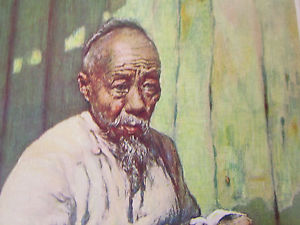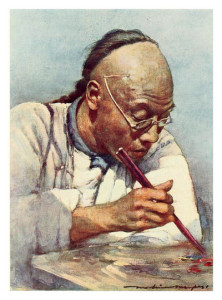The Etched Works of Mortimer Menpes 1855-1938
Posted: March 31st, 2014 | 1 Comment »I was first introduced to the Australian/British artist Menpes by Jonathan Wattis, of Wattis Fine Arts in Hong Kong, who had a few of his etchings in stock once when I popped in there. Menpes was an Adelaide boy but studied art in London and was a pupil and flat mate of James McNeill Whistler.
Now, and here’s what interests us all at China Rhyming, he visited Japan in 1887 and was greatly influenced there. He returned to live on London’s Cadogan Square, a flat he decorated in Japanois style (by AH Mackmurdo of the arts and crafts movement). Whistler and Menpes fell out in 1888 over the interior design of the house, which Whistler felt was a brazen copying of his own ideas.
Later in 1902 Menpes headed east again visiting China, Burma and Japan among other places. His sketches and drawings from these trips are wonderful and now available as a three volume set by Gary Morgan – The Etched Works of Mortimer Menpes. I assume, as the books run chronologically that Volume II – covering 1901 to 1913 is the most relevant. Anyway – they’re all here


If one’s interest is Menpes’ Japanese etchings, then Volume 1 has the most. Volume 3 has the most Indian etchings. Volumes 2 and 3 have roughly the same number of Chinese etchings. The actual breakdown is as follows: Of the 209 etchings in Vol. 1, 63 are Japanese, 16 are Indian, and 1 is Burmese. Of the 295 etchings in Vol. 2, 12 are Japanese, 20 are Indian, 19 are Chinese, and 5 are Burmese. Of the 101 etchings in Vol. 3, 25 are Japanese, 51 are Indian, 21 are Chinese, and 3 are Burmese. There are a couple of etchings where the precise subject is not completely clear or debatable, but I’ve assumed that the author’s particular surmise was correct when tabulating the breakdown above. The Asian etchings in Volume 3 appear to be based on notebook sketches or watercolors made during his earlier trips to Asia.